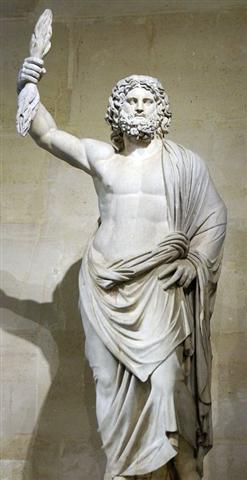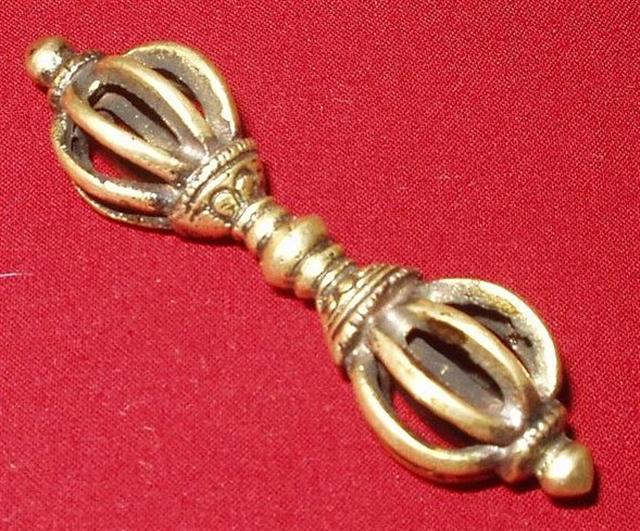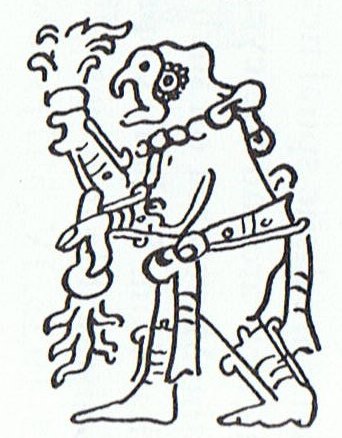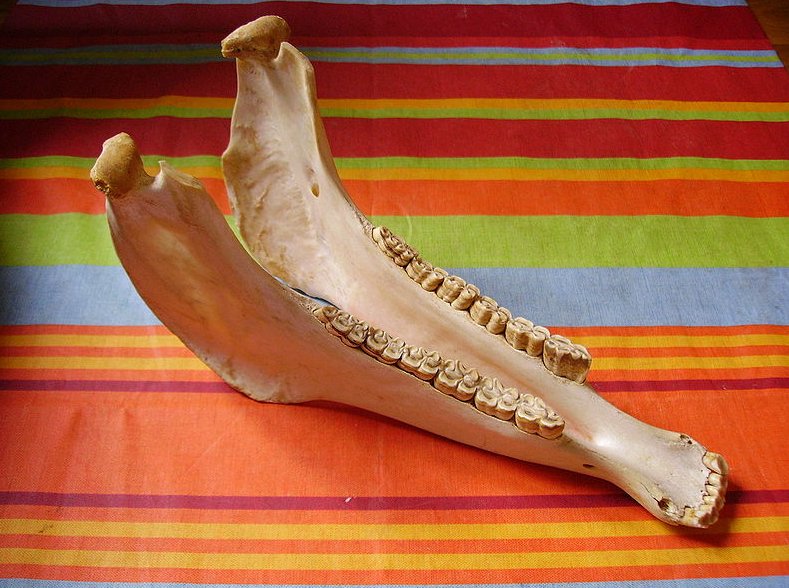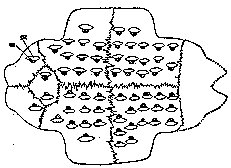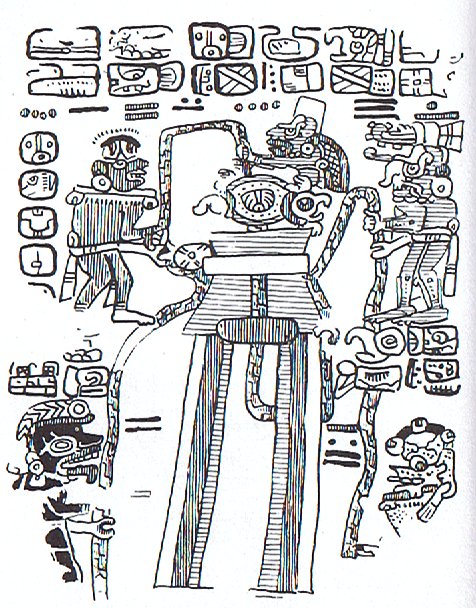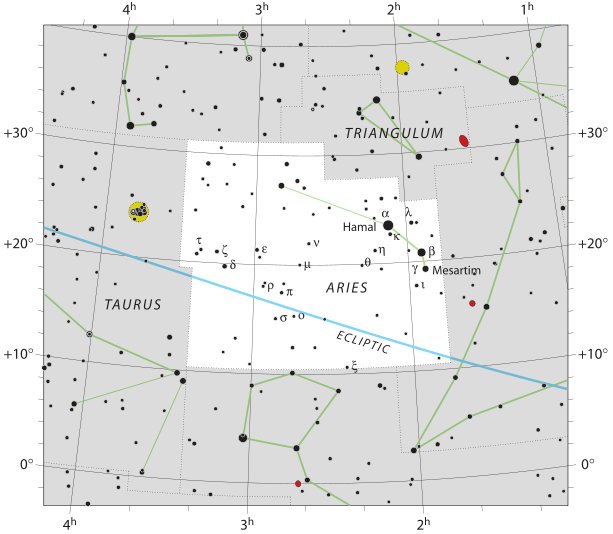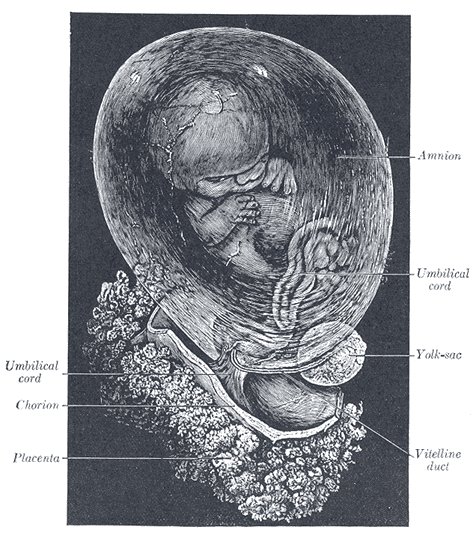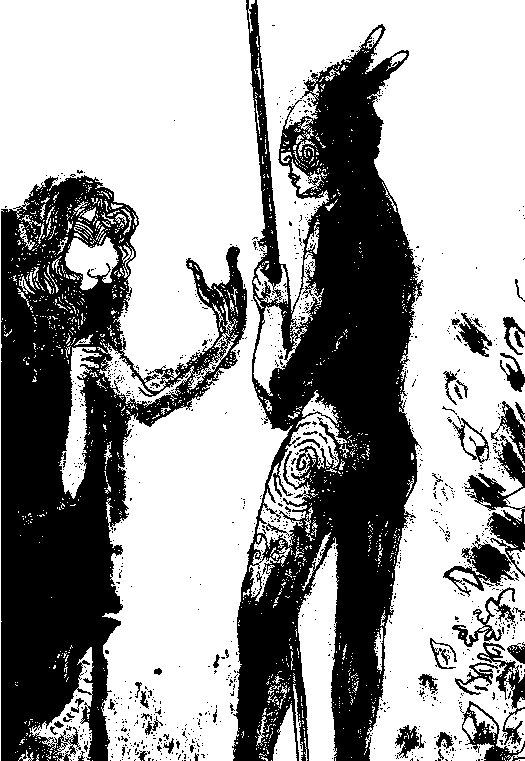The 'thunderous cracking' surely alluded to the god of thunder (Jupiter, alias Thor, Hercules, etc) who was capable of breaking open the hardest of shells with his enchanted weapon. One of his names was Punua - and mamari punua means chicken in his shell:
... There was noise at night at Marioro, it was Hina beating tapa in the dark for the god Tangaroa, and the noise of her mallet was annoying that god, he could endure it no longer. He said to Pani, 'Oh Pani, is that noise the beating of tapa?' and Pani answered, 'It is Hina tutu po beating fine tapa.'
Then Tangaroa said, 'You go to her and tell her to stop, the harbour of the god is noisy.' Pani therefore went to Hina's place and said to her, 'Stop it, or the harbour of the god will be noisy.' But Hina replied, 'I will not stop, I will beat out white tapa here as a wrapping for the gods Tangaroa, 'Oro, Moe, Ruanu'u, Tu, Tongahiti, Tau utu, Te Meharo, and Punua the burst of thunder'. So Pani returned and told the god that Hina would not stop. 'Then go to her again', said Tangaroa, 'and make her stop. The harbour of the god is noisy!' So Pani went again, and he went a third time also, but with no result. Then Pani too became furious with Hina, and he seized her mallet and beat her on the head. She died, but her spirit flew up into the sky, and she remained forever in the moon, beating white tapa. All may see her there. From that time on she was known as Hina nui aiai i te marama, Great-Hina-beating-in-the-Moon ... The enchanted weapon up in the sky was, however, of another kind than the cloth beater down on Earth (or up in the Moon, the sister of Earth):
... In the Babylonian creation epic, which antedates Samson, Marduk uses the Hyades as a boomeranglike weapon to destroy the brood of heavenly monsters. The whole story takes place among the gods. It is known, too, that Indra's powerful weapon, Vaira, the Thunderbolt made of the bones of a horse-headed Dadhyank, was not of this earth ...
... Vajra is a Sanskrit word meaning both thunderbolt and diamond. As a material device, the vajra is a ritual object, a short metal weapon - originally a kind of fist-iron like Japanese yawara - that has the symbolic nature of a diamond (it can cut any substance but not be cut itself) and that of the thunderbolt (irresistible force) ... The earliest mention of the Vajra is in the Rigveda, believed to have been composed between 1700 and 1100 BCE. It is described as the weapon of Indra, the god of heaven and the chief deity of the Rigvedic pantheon. Indra is described as using the Vajra to kill sinners and ignorant persons. The Rigveda states that the weapon was made for Indra by Tvastar, the maker of divine instruments. The associated myth describes Indra using the Vajra, which he held in his hand, to slay the Asura Vritra, who took the form of a serpent ... There was a connection - a complementary relation - between Mother Earth (the Turtle) and Father Sky (the Fire). A page from my preliminary glyph type dictionary at the item honu describes a part of it:
Possibly the time for breaking open the dry (paka) shell of Mother Earth was day 384 (= 364 + 20):
The number of days on side b of the C tablet is 348 (= 12 * 29) and this new world could have been born in day 393 (at heliacal Sheratan, or better at heliacal Hamal).
First the front of the head of Ku (at Sheratan) appeared and 3 days later the back of his head (at Hamal).
... *384 (April 9) - *326 (February 10) = 58 = 2 * 29. April 9 (464) - 58 = 406 = 365 + 41 (February 10). At the time of rongorongo the heliacal stars at the Julian 3-25 for spring equinox were in day 84 (March 25) + 27 = 111 (April 21, *31):
... 'By striking the anvil,' said Ogotemmêli, 'they get back from the earth some of the life-force they gave it. Their blows recover it.' But blows on the iron must be dealt by day. The smith's work is day labour, no doubt because the smithy fire, being a fragment of the sun, could not shine at night. That is why it is forbidden, not only for smiths but for everybody, to strike blows on iron or stone or earth in the night-time. No blow of hammer or tap of pestle should be heard, whether loud or soft, in the silent hours. To strike blows at night would destroy the effect of the blows struck by day. It would mean the rejection of all that had been gained, so that the smith would lose whatever he had recovered during the day of the life-force of which he formerly divested himself ...
... Before the events that are related in this story, Maui possessed the power of changing his own shape, but commanded no enchantment over other things or over nature. After he had obtained the jawbone of Muri ranga whenua he was able to perform great deeds for the benefit of man. HOW MAUI OBTAINED THE SACRED JAWBONE Soon after he had found where his parents lived Maui carried off and slew his first victim. She was the daughter of Maru te whare aitu, and when he had dealt with her in a brutal fashion he dealt with her father also. By means of enchantments he caused this old man's crops to wither, and they were all destroyed. He then decided to make another visit to his parents, and this time he remained for a while in the country of the manapau trees. One day he noticed that some people were in the habit of carrying to a certain place some kono, or small baskets of food, for some old person. 'Who is that food for?' he asked them, and one of the people who were going with it answered: 'It is for your ancestress Muri ranga whenua.' 'Where does she live?' he asked, and they answered, 'Over there.' 'All right,' he said, 'That will do now. Leave the kono here. I will take them to her myself.' From that time on Maui himself carried the daily presents of food that were meant for that old woman. But he never gave them to her, he merely went towards the place where she lived and hid the food in the bushes, and this he did for many days. At length the old chieftainess realised that there was some mischief going on, and the next time Maui came by she put her nose in the air and sniffed. She sniffed and sniffed, feeling sure that there was food not far away. By now she was greatly exasperated by her many days of hunger, and her stomach began to swell out, ready to eat up Maui as soon as he came within reach. Leaning on her stick the old woman turned towards the south, and sniffed the air, but no scent of food or man could she detect. She turned her nose round slowly to the east, and then to the north, sniffing carefully at every angle. Still no scent of food or man could she detect, and she would have devoured either, instantly. She almost thought she must have been mistaken, but then she turned to the west for one more try. From the west, the scent of a man came plainly to her nose, and she cried: 'I know from the smell in this breeze that someone is close to me.' As she began to feel about her with her stick Maui murmured something, and she knew at once that he was a descendant of hers. Her stomach, which had been distended to a great size, began to shrink again. This was fortunate for Maui. If his scent had not been carried to that old woman's nose by the westerly breeze, she would certainly have eaten him up. When her stomach had resumed its normal size the old woman asked him, 'Are you Maui?' and he answered in a respectful voice: 'Even so.' Then she drew near and peered at him with her eyes that were nearly blind. 'Why did you cheat your old ancestress like that?' she said. 'Why have you been hiding my dinner, so that I have had nothing to eat these many days?' And she pointed with a crooked finger to her toothless and empty mouth. 'Ei?' she asked, and poked young Maui with her finger. In a voice that showed he was not in the least afraid of her, Maui answered: 'I was anxious that your jawbone, which has magic properties, should be given to me.' 'Take it,' said that old woman. 'It has been kept for you till now.'
So saying she took her jawbone - for she was dead all down one side from being starved - and handed it to Maui. He carried it to the stream to wash off the blood and the bits of rotten flesh, and the blood went into the kokopu, giving that fish its reddish colour. After this he returned with the jawbone to the place where his brothers lived. Soon afterwards Maui took a wife, and this led to the first of the exploits that he performed with the help of the jawbone of his ancestress. His wife went one day to wash herself in a still stream, and while she was in the water Tuna roa, the ancestor of eels, came slithering around her and made himself objectionable. That is, he touched her most improperly. When she went home she said to Maui: 'There is a man in that pool with very smooth skin.' Maui at once felt jealous and decided to kill Tuna. He dug a trench beside the pool, and laid down nine logs as skids, so that Tuna might slide over them as when a canoe is launched. Then he told his wife to sit near the trench while he put up a screen to hide himself. Soon Tuna was seen swimming towards her, and as he slithered over the skids Maui ran out and slew him with the enchanted weapon. One end of Tuna went into the sea and became the ngoiro, or conger eel. The other end of Tuna became the fresh-water eel and is still called tuna. A part of him became the kareaou, or supple-jack, whose smooth black canes, like eels among the river-weed, entangle the forest undergrowth today. And the blood of Tuna was absorbed by the rimu, the totara, and other trees, giving their wood its reddish colour. After this exploit Maui lived quietly with his wife, and children were born to them ... (Maori Myths & Tribal Legends) |


